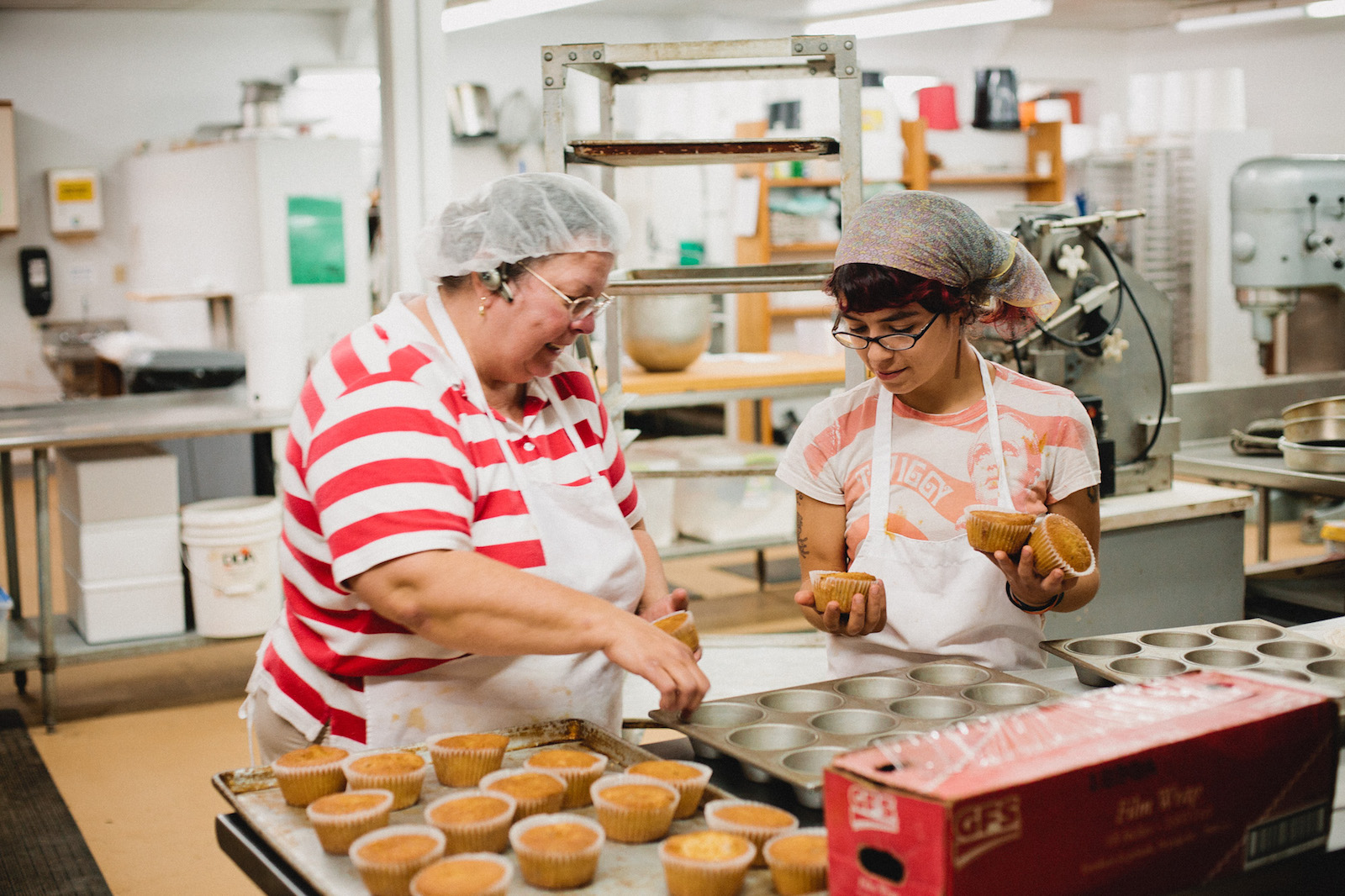Daily Yonder: Rural Communities Must Empower Youth

A young person learns from a more experienced worker at a commercial kitchen incubator in Athens, Ohio. Photo by Shawn Poynter/Daily Yonder
By Ron Daley June 22, 2017
The future of rural America depends on attracting younger generations to make a life in smaller communities. That means listening to young people, responding to their interests, and sharing power.
Rural communities must engage their youth if they are to prevent the continued exodus of their creative talent and futures.
Rural America has long suffered the brain drain and loss of educated talent, entrepreneurs and leadership. However, there are signs in the makeup of the emerging youth that this loss can accelerate this outmigration causing even more desperate ghost communities.
For the first time in the nation’s history five generations are in the workforce: the Traditional Generation born prior to WW II, the Baby Boomers, Generation X, Older Millennials, and now Generation Z (Younger Millennials). Each generation has different attitudes toward work and interaction with their peers and communities.
Just as employers have learned to adjust their operations to attract these “digital pioneers” into their operations, rural communities must understand both the strengths and desires of youth if they wish for them to remain in their communities. The youth are in a better place to lead their communities in these days of the global economy and society than the “Aging Baby Boomers” who are the dominant decision makers. And, if Generation Z and Millennials are not allowed to be active decision makers about their futures, they will leave.
Dr. Corey Seemiller, professor and researcher at the University of Arizona, says members of Gen Z “love to contribute their knowledge and opinions on-line…They like to engage in the co-construction of knowledge: they don’t like to just be recipients of communication.” He adds that they are very concerned about issues globally and locally.
Seemiller observes, “Generation Z relies on its network of relationships and believes their peers are more influential in their learning. They learn by sharing among themselves and believe no one is an expert because there are a bazzilion people with knowledge.” Researchers at Beloit College (Ohio) echo similar findings concluding Gen Z are very engaged and socially conscious along with being very tech-immersed.
These findings correspond to the “Millennial Roundtables” the Kentucky Valley Educational Cooperative have hosted to help create career pathways for students and to prepare communities for the global economy.
Community leaders need strategies to keep its youth. First and foremost, is to understand their value as leaders. As Seemiller states, the youth wish to be engaged and make a difference in their communities.
Leaders can set up opportunities for the youth to become active in the community and not just as token youth appointees. Mentoring and leadership programs are a good start. Youth appointments to boards and commissions will benefit communities. The digital skills of the youth can be utilized to tell the community’s story and expand local businesses via enhanced business websites and more effective social media marketing. Their creative thinking and problem solving can advance communities when given the opportunity.
One older millennial from eastern Kentucky states, “We wish to create things including our own jobs and technology allows us to do this.” He describes millennials as very entrepreneurial. He adds there are disconnects in communities supporting youth as they try to pursue entrepreneurism. “They talk about how great the person or idea is, but, then they don’t support them and the person eventually leaves to go where they can pursue their dream.”
Since digital is so important to the youth, leaders must ensure that the community has expanded broadband and quality cell service. Businesses should consider offering free Wi-Fi and have hot spots in the community. The technology will allow citizens to be a part of the New Economy working from homes or offices. The technology enables entrepreneurial enterprises which grows the local economy while attracting the creative talent that youth wish to be able to interact. Additionally, the technology will encourage social interaction with various media forms.
Communities should asset map their vacant facilities and make them financially and socially attractive to young entrepreneurs. Schools can explore keeping their facilities open after hours for use by their students for job creation and work. Additionally, a community fund or group of funds can be set up to assist the new job creators.
Entertainment and social venues are keys to keeping younger people in rural communities. Music, gyms, coffee shops, and the availability of social drinking places are important. Communities which “vote dry” are essentially “voting old.”
Easy, affordable access to higher education so youth can remain close to home aids in keeping youthful talent in rural communities. Once students go away for college, quite often they do not return. Branch campuses of the Kentucky Community and Technical College System (KCTCS) have been very beneficial to rural students. Hopefully, KCTCS and university outreach will remain in rural Kentucky as the state continues to underfund education. Models like the University Center of the Mountains in which university partners have awarded over 2,000 degrees in Hazard, Kentucky, is a model to be replicated. It is unfortunate the state has not funded the model program.
Local civic organizations need to recruit youth to their groups while helping create other civic intergenerational engagement and service opportunities.
The “New Youth” of the day along with Generation X, Baby Boomers and the Traditional Generation can team up to make rural America more vibrant. The first two steps are to listen to them and then to empower the community’s future.
Ron Daley is the strategic partner lead for the Kentucky Valley Educational Cooperative, a consortia of 21 school districts located in 16 counties in southeastern Kentucky.